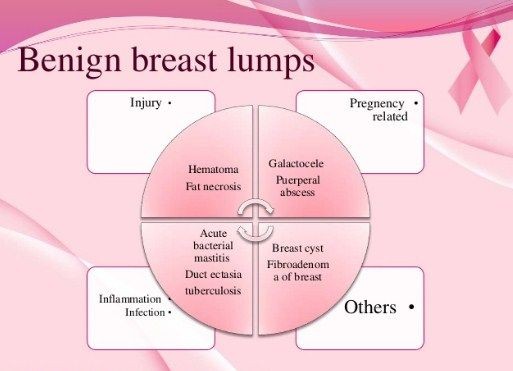
What Happens If Fibroadenoma Isn’t Removed?
Fibroadenomas are benign breast tumors that develop from glandular and connective tissue.
While generally harmless, fibroadenomas do not necessarily require immediate removal upon diagnosis.
- Most fibroadenomas are left untreated.
- Many women and their doctors determine that the lump does not require removal.
- It is safe to leave fibroadenomas alone.
- However, regular follow-up with a doctor is recommended to monitor for changes.
- Fibroadenomas typically shrink after menopause.
Although fibroadenomas rarely become cancerous, it can be difficult to definitively confirm whether a lump is cancerous or not. To alleviate concerns, some lumps may be excised or biopsied.
Unpleasant or painful fibroadenomas may be removed. If a fibroadenoma continues to grow, removal may be recommended before it becomes too large.
Generally, fibroadenomas do not increase the risk of breast cancer. However, larger and more complex lumps have a slightly higher risk. Research suggests that only 0.002 to 0.125 percent of fibroadenomas develop into cancer.
What is a Fibroadenoma?
A fibroadenoma is a noncancerous lump that develops in the breast.
Fibroadenomas are most commonly found in women in their 20s and 30s, although they can occur at any age. They are rarely seen in men.
The exact cause of fibroadenoma development is unclear. Fluctuating hormone levels, particularly during puberty, pregnancy, and menopause, may be a contributing factor.
Fibroadenomas have well-defined margins and usually have a distinct shape. Although not life-threatening, treatment may be necessary if the lump causes discomfort. Fibroadenomas can occur in one or both breasts.
Some fibroadenomas are too small to be felt. However, when palpable, they feel noticeably different from the surrounding breast tissue.
Fibroadenoma tumors are typically movable and not painful. They may have a hard, marble-like texture and a smooth, rubbery feel.
4 Types of Fibroadenomas
There are 4 different types of fibroadenomas:
- Simple fibroadenoma: The majority are simple fibroadenomas and are more common in younger individuals.
- Typically, there is a single mass in the breast with well-defined boundaries and homogenous cells.
- A simple fibroadenoma does not increase the risk of breast cancer.
- Complex fibroadenoma: Complex fibroadenomas are less common but become more prevalent with age.
- While they may have distinct boundaries, the internal structure of a complex fibroadenoma differs.
- A complex fibroadenoma may appear less uniform under a microscope.
- It may exhibit rapid cell division (hyperplasia) and abnormal characteristics (atypia).
- A complex fibroadenoma may increase the risk of breast cancer.
- Juvenile fibroadenoma: These are the most common breast lumps in girls and teenagers aged 10 to 18 years.
- They can grow to be large but often regress over time.
- Giant fibroadenoma: These fibroadenomas can grow to be more than two inches long.
- If they compress surrounding tissues, removal may be necessary.
How to Perform a Breast Self-Examination to Detect Fibroadenomas
You can perform a self-examination to detect fibroadenomas and other breast lumps.
The best time to conduct this examination is one week after the start of your menstrual period, as the breasts will be less swollen and tender.
Steps to Perform a Breast Self-Examination
- Undress from the waist up and lie down.
- Lying down ensures that your breasts are evenly distributed over your chest, making it easier to detect lumps or changes.
- Use the pads of your three middle fingers to feel all the breast tissue, from the collarbone to the bra line and from the armpit to the breastbone.
- Avoid using just your fingertips.
- Use your left hand’s middle fingers to check your right breast, and vice versa.
- You can use an up-and-down or spiral motion.
- Move your fingers in small, circular motions.
- Apply different amounts of pressure to feel all the breast tissue. Use light pressure near the surface of the skin, firmer pressure near the breastbone and ribs, and medium pressure to probe deeper tissues.
- When examining for lumps or changes, keep your fingertips in contact with the skin.
In addition to lying down, you can also examine your breasts while standing or in the shower. Soapy fingertips help detect changes more easily.
- In the shower, raise one arm over your head and gently wash the breast on that side.
- Using the flat surface of your fingers, lightly glide your hand over your breast, feeling for any lumps or thickened areas.
- Standing in front of a mirror, observe any changes in your breasts.
If you find a lump, immediately check the other breast. If you discover the same type of lump in the same location on the other breast, it is likely normal.
If you notice any of the following changes, consult a doctor:
- A new mass, whether or not it is tender to touch
- Unusually thick areas
- Changes in breast or nipple skin, such as puckering or dimpling
- Sticky or bloody discharge from the nipples
- Unusual asymmetry between breasts
Breast self-examinations may increase anxiety and stress if even minor changes are observed. This can lead to unnecessary visits and examinations, such as biopsies.
Due to this, some experts do not recommend breast self-examination, while others support it as a means of early detection.
How to Diagnose a Fibroadenoma
Visit a doctor if you notice any changes in your breast or feel a lump.
The following tests are used to determine the type of lump:
- Physical examination: The doctor examines your breast and feels for the presence of a mass. Further tests may be ordered if a mass is found.
- Mammogram: This special X-ray machine detects both cancerous and noncancerous changes. You will stand in front of the machine with your breast against a plate while X-ray images are taken.
- Ultrasound: This imaging procedure uses sound waves to create images of breast tissue. It helps identify masses or abnormalities detected during a physical examination, mammography, or breast MRI. Ultrasound is noninvasive, safe, and does not involve radiation.
- Image-guided core needle breast biopsy: This procedure, performed under local anesthesia, involves inserting a needle into the breast under guidance from imaging techniques like ultrasound. A sample of tissue is collected and sent to the lab for analysis to determine if the lump is benign or cancerous.
Treatment Options for Fibroadenomas
Fibroadenomas often resolve on their own and may diminish after menopause. Depending on symptoms and test results, your doctor may recommend removal or monitoring.
Monitoring
Monitoring is appropriate in the following cases:
- Continuous monitoring if lumps are fibroadenomas and not breast cancer, to ensure they do not grow.
- If removing the lumps would require the removal of significant breast tissue, altering the breast’s shape and texture, which may affect future mammograms. In such cases, regular breast examinations and imaging are crucial to monitor for growth.
Recommendations for removal of fibroadenomas include:
- Rapid growth
- Painful lump
- Unclear biopsy results
- Concern about breast cancer
Surgical Options
- Vacuum-assisted excision biopsy: This outpatient procedure involves small incisions and local anesthesia. The doctor uses suction equipment and ultrasound guidance to remove fibroadenomas. No stitches are required as it is less invasive.
- Lumpectomy (Excision Biopsy): This procedure, which takes about an hour, involves removing the fibroadenoma. Stitches, either dissolvable or regular, are used to close the wound after the fibroadenoma is removed. It is frequently recommended for rapidly growing or larger fibroadenomas. This procedure is performed at the patient’s request. The removed fibroadenoma is sent for biopsy.
- Cryoablation: This procedure involves freezing the fibroadenoma cells using a cryoprobe. Prior to cryoablation, a core needle biopsy must confirm the presence of a fibroadenoma.
- High-Intensity Focused Ultrasound (HIFU): This procedure uses high-frequency radiation to destroy the fibroadenoma while sparing adjacent tissues.


